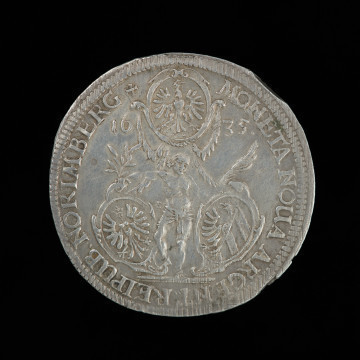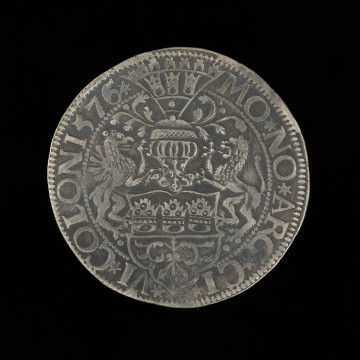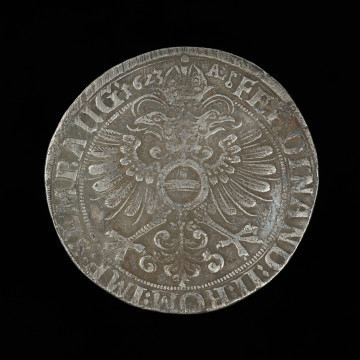
Thaler of the Reich
1624
National Museum in Szczecin
Part of the collection: German coins
Some historians believe that Lübeck was the first city of the Reich to be elevated to the status of an imperial city. Emperor Frederick II Hohenstauf (1194-1250) confirmed the economic privileges Lübeck had received earlier, which enabled the development of the city and allowed it to accumulate wealth, in a document from 1226. One of the privileges the imperial cities had was minting their own money; this, however, required the continuous availability of silver. The trade city had no issue with that. The town's coffers were filled with customs duties, market fees, fees from the right of storage, and various internal taxes. In 1559, when the presented thaler was minted, the splendour of Lübeck was already a thing of the past, although the city was still one of the commercial centres on the Baltic Sea. Lübeck could afford not only to run a thaler mint, but also to issue golden coins. The Lübeck mint had an imperial eagle on the obverse of the thalers and a Latin inscription on the reverse, saying Imperial City. A special feature of the Lübeck thalers from the second half of the 16th century were the marks of the mayors who were in charge of the city's mint at that time. That is why the reverse of the presented thaler, apart from the jackdaw – the sign of the mint master Joachim Dalenann, on the sides of the Hanseatic escutcheon held by St. John the Baptist, featured a plumb bob in the arms of the compasses – the mark of the mayor Anton v. Stiten. This mark was most probably composed only for the coin, as the coat of arms of the v. Stiten family was quite different. The mayor belonged to an old Mecklenburg knightly family, whose whose members had been associated with Lübeck for about 300 years, often holding positions of city councillors and mayors. Lübeck retained its status of a free city until 1871, when it became part of the German Empire. The city’s mint, which resumed its operation periodically, survived until the beginning of the 20th century.
Mieszko Pawłowski
Other names
Taler
Author / creator
Dimensions
cały obiekt:
Object type
coin, money
Technique
minting
Material
silver
Creation time / dating
Creation / finding place
Owner
National Museum in Szczecin
Identification number
Location / status

1624
National Museum in Szczecin

1576
National Museum in Szczecin

1623
National Museum in Szczecin
DISCOVER this TOPIC
Museum of King Jan III's Palace at Wilanów
DISCOVER this PATH
Educational path